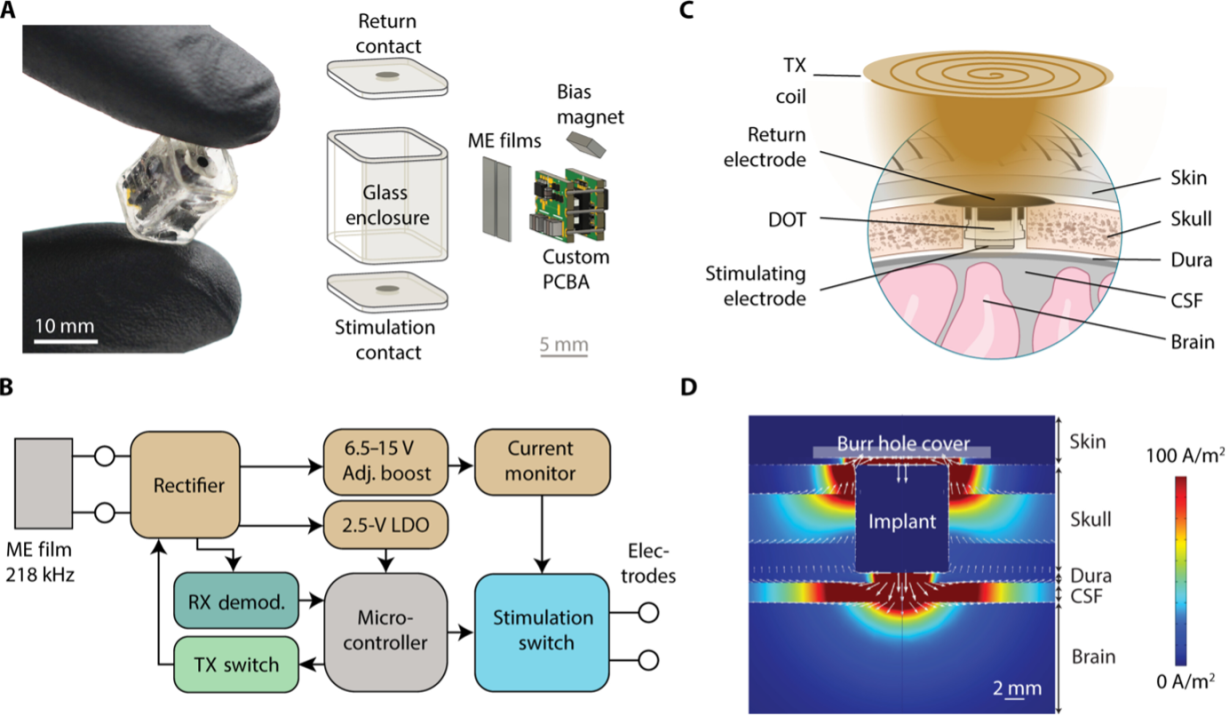There’s a pea-size wireless stimulator that can control your feelings and movement. What’s the worst that could happen?
Psychiatric and neurological illness, pain, movement disorders and spinal injury – a growing number of conditions can be treated right at the source, i.e. the brain, with electronic neuromodulation.
But deep-brain stimulation and battery-powered implants requiring major invasive surgery and leads running through the body have some obvious drawbacks.
A team from Texas’s Rice University says it has overcome these challenges with its implantable epidural brain stimulator, which is no bigger than a pea and can be powered through the dura and controlled externally to produce cortical activity.
Any regular readers (anyone?) will know already that the Back Page’s mind is irresistibly drawn to the med-tech-horror-thriller applications of such a device.
You wake up from brain surgery to a marvellous improvement … but some of your thoughts aren’t your own! Your right hand doesn’t always obey you! Next thing you know, you’re murdering strangers or assassinating the president on behalf of a menacing deep-state or foreign agency!
But dragging ourselves back to reality, which is still pretty cool, the authors say that building on recent advances in implant technology, “we could create a cortical brain stimulator with sufficient energy to activate human cortical tissue through the dura but still small enough to be implanted into a roughly 14-mm standard burr hole”.
Their Digitally programmable Over-brain Therapeutic (DOT), a chip sealed in glass and sleeved in silicone, applies a “minimally invasive form of neuromodulation [called] externally powered cortical stimulation (XCS)” with voltages up to 10V. A magnetic coil and driver system is placed on the skin outside to transmit power and data to the implant, which can communicate back.
Surgery is a relatively quick half-hour – at least in pigs – involves no actual brain contact and should not need to be repeated, as is the case with battery-powered implants.

The authors say the implant remained alive and functioning in free-roaming pigs for over a month “and was able to consistently drive motor stimulation”, which was matched to transcranial magnetic stimulation doses for depression and other disorders.
In two human subjects, they implanted the chip directly above the bit of the motor cortex responsible for hand contractions, one beneath and one above the dura. When the DOT was activated, the first subject’s hand contracted while in the second “the DOT elicited visible thumb movements”.
OK, so we’re not in the president-assassinating realm yet, but baby steps.
Some day, the authors say, episodic neuromodulation “may one day be applied safely at home with a precisely targeted implant combined with a wearable headset that need only align approximately with the neuromodulation target”.
And why stop at one? With multiple implants “one could develop more accurate ways to modulate the brain states that are believed to be associated with mood and memory or activate distributed locations across the spinal cord for movement restoration or pain treatment”.
Brb, we’re off to pitch our sci-fi Cabinet of Dr Caligari to Netflix.
Send minimally invasive story tips to penny@medicalrepublic.com.au.


